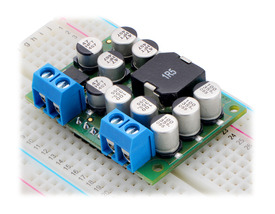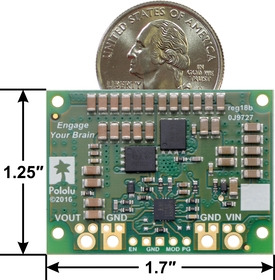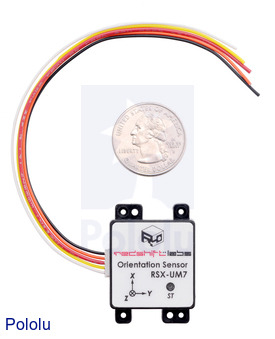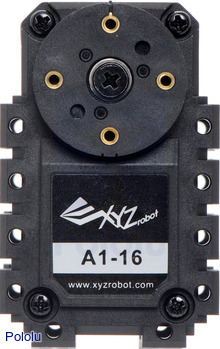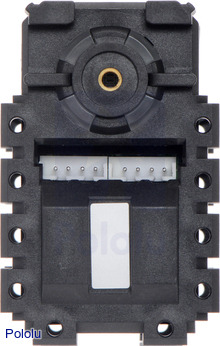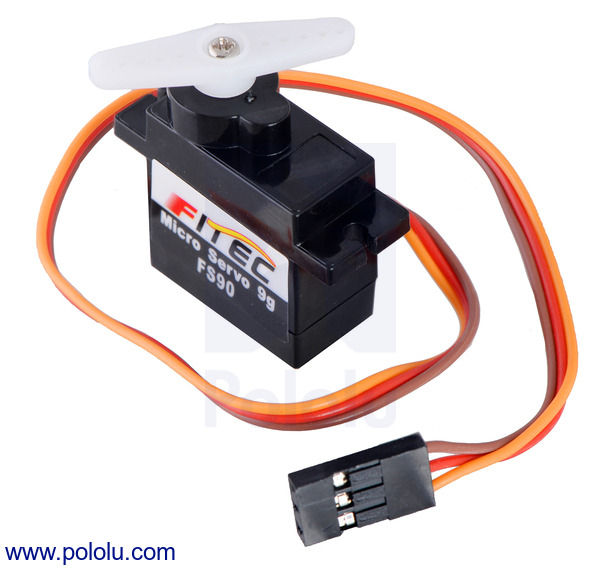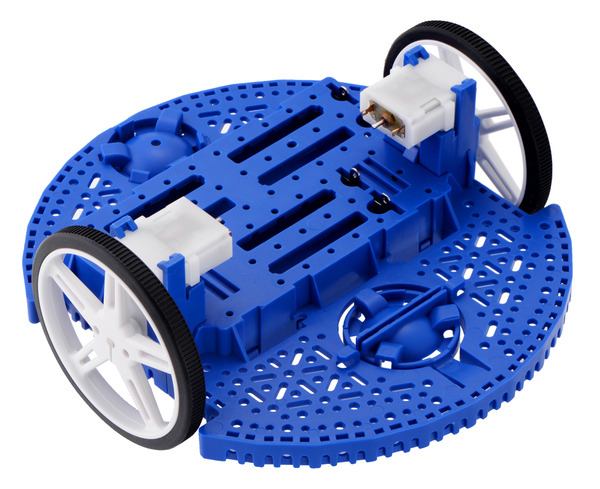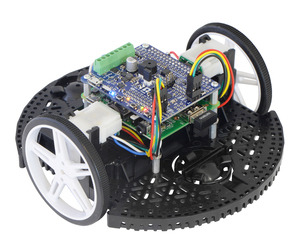Pololu Blog » Posts tagged “new products” »
Posts tagged “new products” (Page 16)
You are currently viewing a selection of posts from the Pololu Blog. You can also view all the posts.
Popular tags: community projects new products raspberry pi arduino more…
New products: Addressable RGB LED strips based on the SK6812
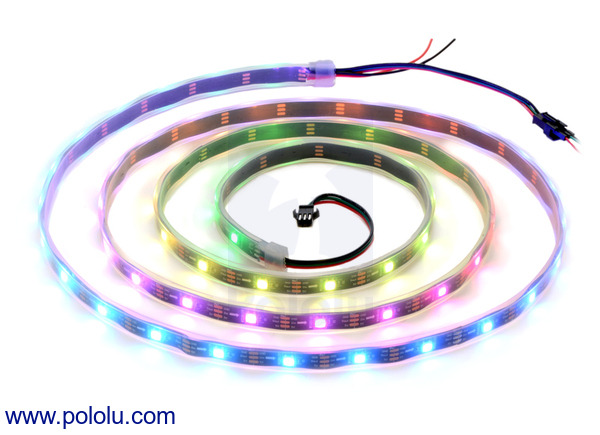 |
We are now selling new addressable RGB LED strips based on the SK6812. These LED strips replace our older WS2812B LED strips. Like the WS2812B, the SK6812 is an RGB LED with an integrated driver that allows independent control over a chain of LEDs using just one I/O line. The main difference between the two drivers is that the SK6812 has constant current control capabilities that let it have a voltage-independent color and brightness over a wide range of voltages, so any voltage drop due to long power lines is less of a concern.
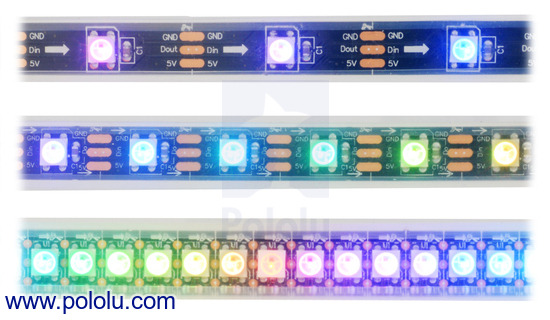 |
LED side of the SK6812-based addressable LED strips, showing 30 LEDs/m (top), 60 LEDs/m (middle), and 144 LEDs/m (bottom). |
|---|
We offer six different kinds of SK6812 LED strip with different LED densities and lengths. Our strips with 30 LEDs per meter are available in three lengths:
We also offer denser SK6812 LED strips that have 60 LEDs per meter:
Our highest density strip has 144 LEDs per meter:
We provide LED strip example code for the Arduino, AVR, and mbed microcontroller platforms. More information about the LED strips and how to use them can be found on the LED strip product page.
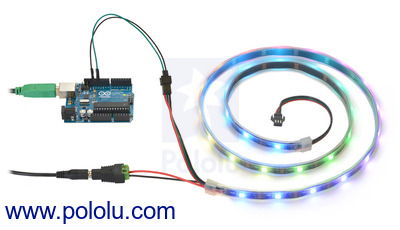 |
Controlling an addressable RGB LED strip with an Arduino and powering it from a 5V wall power adapter. |
|---|
New D24V150Fx 15A step-down voltage regulator family — our highest-power regulators yet!
I am excited to announce that we just released our highest power regulators ever. The new D24V150Fx family of step-down regulators includes units with 3.3 V, 5 V, 6 V, 7.5 V, 9 V, and 12 V outputs and can output currents of around 15 A! With all of the output voltages available, the D24V150Fx family of regulators is great for a variety power-hungry projects like running servos or our metal gearmotors and supplying large LED displays.
|
|
The maximum continuous output currents for all the members of the D24V150Fx family are shown in the graph below. You can see that the available output current is generally a little higher for the lower-voltage versions than it is for the higher-voltage versions, and it decreases as the input voltage increases.
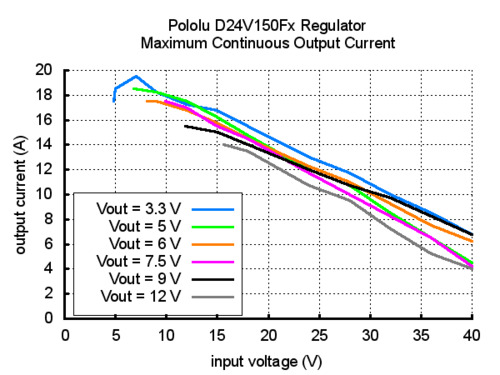 |
These regulators accept input voltages up to 40 V and have typical efficiencies between 80% and 95%. Integrated reverse-voltage protection, over-current protection, over-temperature shutoff, undervoltage lockout, and soft-start features make these regulators robust, and a power good output can be used to monitor the output voltage.
See the product pages for any of the D24V150Fx regulators for more information on these new regulators, or visit our voltage regulator category to see all of our regulator options.
New versions of our 38 kHz IR proximity sensors
We have released slightly updated (irs05b) versions of our 38 kHz IR proximity sensors and discontinued the previous (irs05a) versions. The main changes are to the locations of the IR emitter and receiver, which have been moved away from the edge of the board. This results in better shielding from the PCB itself, which improves performance. Also, the front edge is now routed rather than scored to provide a cleaner edge that also slightly improves the sensor performance and consistency.
Like the originals, these new sensors are available in high-brightness and low-brightness versions with typical sensing ranges up to around 24″ (60 cm) and 12″ (30 cm), respectively. The new versions have the same dimensions and pinouts as the originals, so they can be used as drop-in replacements for any applications that are not dependent on the original component locations.
UM7-LT and UM7 orientation sensors now from Redshift Labs
The UM7-LT and UM7 orientation sensors, originally developed by CH Robotics, are now being manufactured and supported by Redshift Labs. The updated versions of these sensors are now available from Pololu.
|
|
The UM7 is an Attitude and Heading Reference System (AHRS) that takes measurements from its three-axis accelerometer, gyro, and magnetometer and calculates orientation estimates with its integrated microcontroller. It is available with an enclosure as the UM7 or without one as the UM7-LT. Aside from a few updated components and the addition of a conformal coating on the UM7-LT, these sensors are functionally identical to the original versions produced by CH Robotics.
For more information about the orientation sensors, see their product pages below.
New products: XYZrobot Bolide humanoid robot DIY kit and A1-16 smart servo
|
|
We are now offering two new products from XYZrobot: the Bolide Y-01 advanced humanoid robot DIY kit and the A1-16 smart servo.
The Bolide Y-01 DIY kit from XYZrobot comes with all of the components needed to build this advanced humanoid robot, including a Bluetooth controller, an Arduino-compatible ATmega1280 microcontroller, sensors, and 18 A1-16 smart servos. The ATmega1280 microcontroller comes preprogrammed to perform a range of complex movements, including dancing, walking and standing up in response to commands from the included Bluetooth remote or a smartphone or tablet running the XYZrobot app. The control board includes a three-axis accelerometer for maintaining postural stability and detecting falls, and the robot also has a distance sensor in its chest that can detect objects in front of it. For those interested in expanding the capabilities of this robot beyond the preprogrammed routines, the Bolide Y-01 control board can be programmed with the Arduino IDE and the XYZrobot Editor software. You can find more details about the Bolide Y-01 advanced humanoid robot DIY kit on its product page.
|
|
We are perhaps even more excited about carrying the A1-16 smart servos separately. These specialty servos are well suited for applications such as humanoid robots, hexapod robots, and robotic arms that require strong and complex actuation. Unlike the usual RC hobby servos, these servos are not only capable of 360° continuous rotation, but they also offer position control over an effective 330° range. To achieve this kind of motion, they use a TTL serial interface, which also allows them to be daisy chained and controlled from the same serial bus (this is their only method of control, so they will not work with standard RC receivers and servo controllers). In addition, these smart servos provide additional feedback such as position, speed, and temperature! The four-color LED featured on each servo is used as a visual error indicator by default, which is really handy to quickly determine if servos in a chain are experiencing a problem. Alternatively, this LED can be manually controlled through the serial interface. See the A1-16 smart servo product page for more information about this feature-packed servo.
New product: FEETECH FS90 Micro Servo
We are now carrying the FEETECH FS90 micro servo. At a weight of only 9 g and less than inch long, this servo is great for actuating tiny mechanisms. We also carry the continuous-rotation version of this servo, the FEETECH FS90R.
Video: Romi chassis assembly
New Romi chassis
I am excited to announce the release of the Romi chassis, our new platform for mobile robotics. Romi is a 6.5″-diameter round chassis that includes all the basic mechanical parts that you need for a mobile robot: a base plate with integrated battery holder, motors and motor brackets, wheels with silicone tires, and a ball caster as a third point of contact.
 |
The Romi chassis is designed to be extended. It includes numerous mounting holes and slots, including specific spots for Arduino and Raspberry Pi and a place in front for a second ball caster. The motors have extended shafts for use with Romi encoders in applications requiring precision. For power, you can choose between four and six AA cells; we recommend the Romi power distribution board for access to battery power.
As an example of what you can do, here is the chassis with a Raspberry Pi A+ and our A-Star Robot Controller mounted on top, with power, motors, and encoders all fully connected and operational:
|
|
The chassis is available in six different colors, and if you want to mix and match, you can head over to our Romi Chassis Components category and select the parts you want.
New product: T1-3/4 (5mm) RGB LED with Diffused Lens (5-pack)
We are now selling T1-3/4 (5mm) common anode RGB LEDs! These multi-color LEDs contain red, green, and blue (RGB) elements that can be mixed to produce different colors. The three color elements share a common anode and are encased in a diffused white lens that blends the colors and widens the viewing angle. This product is a pack of five (5) RGB LEDs.
 |
These LEDs replace the RGB LEDs with a common cathode that we used to sell. The common-anode setup of the new ones is nice because you can drive the LEDs with a low-voltage microcontroller I/O pin in an open-drain configuration (provided the pins can handle the current and are tolerant of the LED supply voltage). If you need to build your own drive circuit, you just need one low-side transistor per LED.
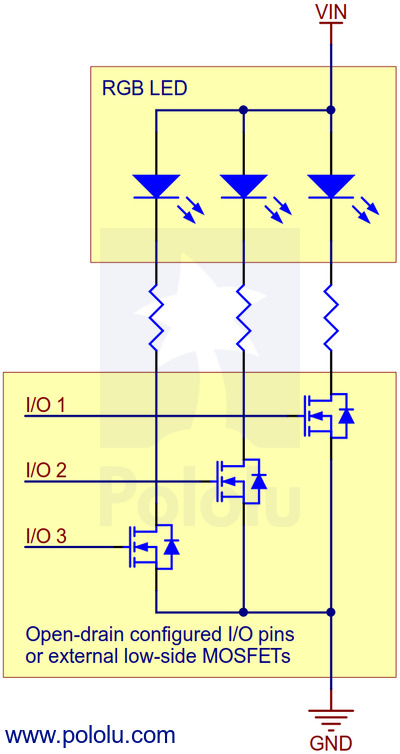 |
Here are some other posts on our blog about LEDs:
New product: Magnetic Encoder Pair Kit for Mini Plastic Gearmotors
We now have a magnetic encoder pair kit available for our mini plastic gearmotors with extended back shafts. Like our encoder kit for micro metal gearmotors, these kits consist of Hall effect sensor boards that mount to the back of the motors and magnetic discs that fit on the motors’ back shafts. The encoders provide a resolution of 12 counts per revolution of the motor shaft (when counting both edges of both channels); in terms of counts per gearbox output shaft revolution, the resolution is multiplied by the corresponding gear ratio.
 |
For more details about the encoder kit, see the product page.







